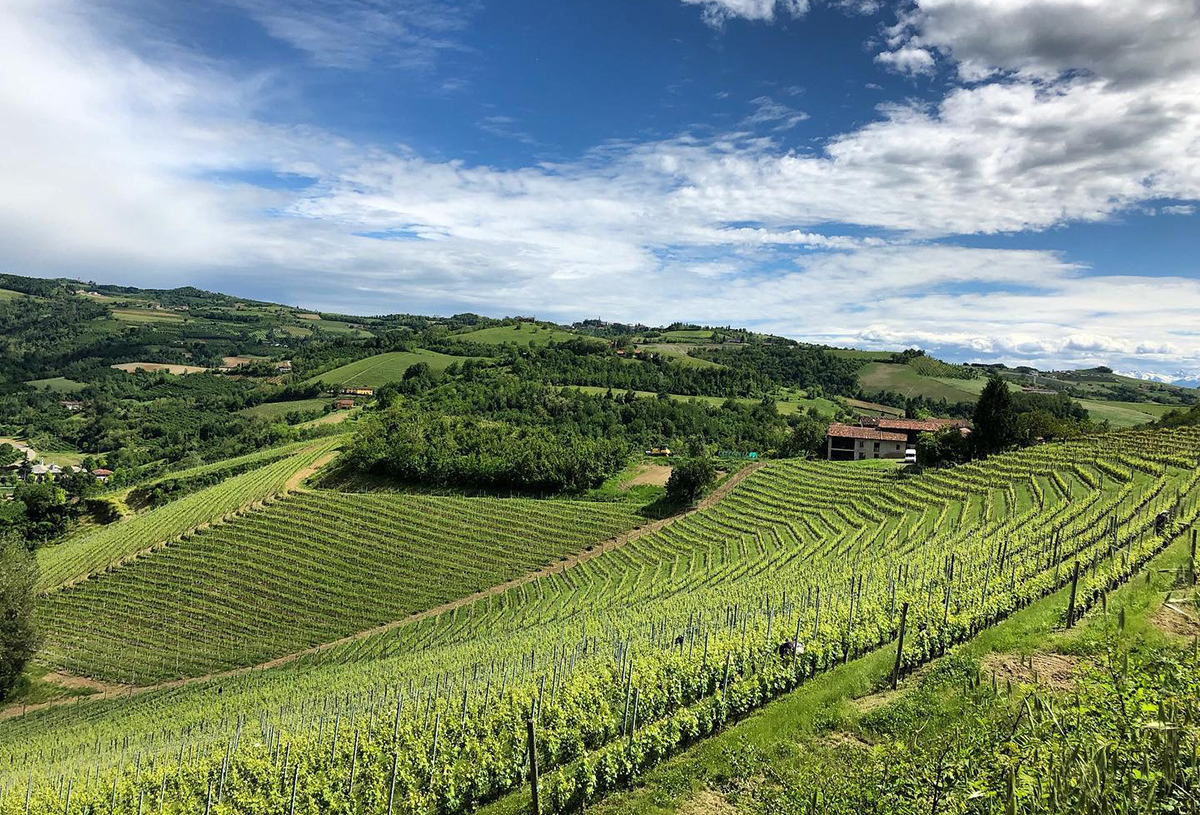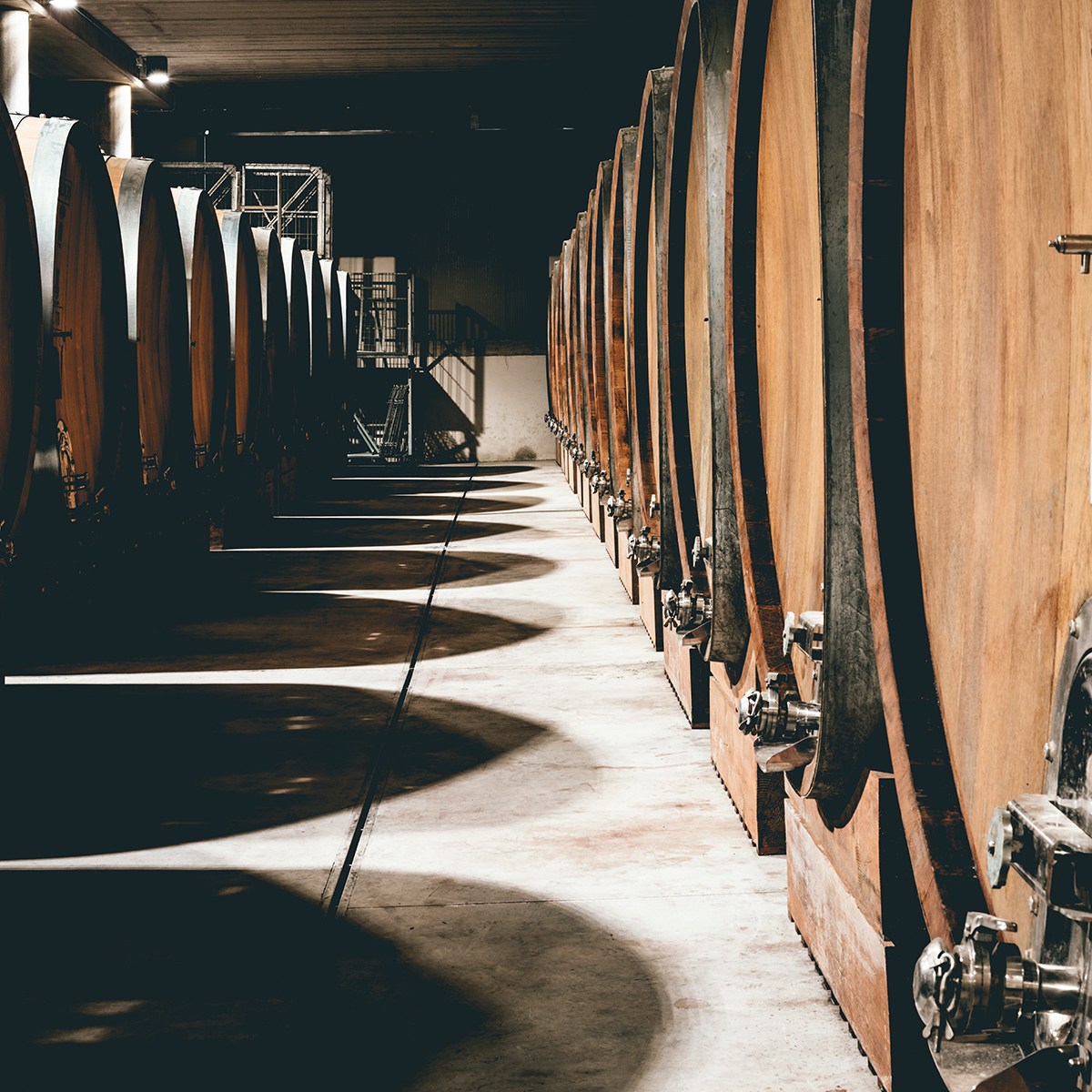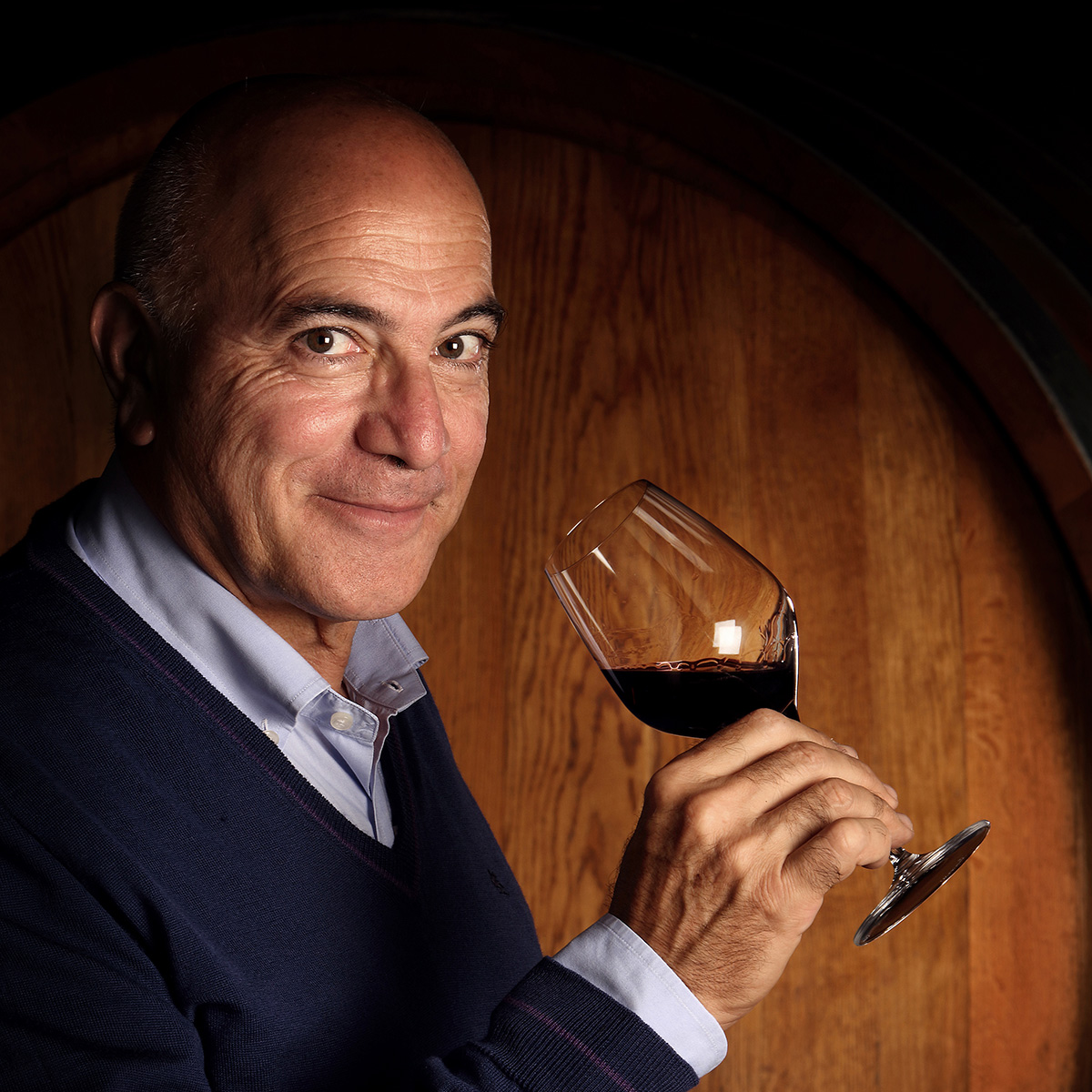
The Vaira family is based in the small village of Vergne, which sits above the town of Barolo on the westernmost edge of the denomination. They have 10 hectares of Barolo vineyard planted along this western part of the zone, the prime site being Bricco delle Viole, which sits at over 400 metres above sea level. The altitude and westerly orientation make this vineyard an exceptional cru, as it benefits from the cool breezes that flow from the mountains to the west, as well as from morning and evening sun. The style of wine from this site, scented yet ripe, supple yet with great ageing potential, sets the template for the rest of the Vajra wines.
While Aldo’s grandparents bought the land in the 1920s, his father was educated in Turin, after which he became a lawyer. But it all started for Aldo in 1968 when he was part of a group of protesting students who marched past his father’s office. Shocked at Aldo’s involvement with the marchers, his parents despatched him to the farm in Barolo for the summer, far from the ferment of revolutionary ideas that were in the air in 1968. When he returned to Turin in September, his parents were even more shocked when he told them he wanted to become a farmer and bring the family farm back to life. After much discussion, his parents agreed to him studying Agriculture at university.
During the next four years, Aldo travelled frequently to Vergne to start planting and running a small vineyard, putting into practice what he learned at university. One of the first precepts he implemented was organic viticulture, something that was revolutionary at the time, but which has been core to the Vajra philosophy ever since. In 1972, he was ready for his first vintage, which turned out to be the worst of the 20th century. Despite the fact that not a bottle of Barolo was produced from the 1972 vintage, he remained calm and committed, teaching viticulture to earn a living while the wines he made in subsequent vintages matured in the cellar. At the same time, he slowly acquired more land where he could. Today, the estate has 20 hectares in Barolo, which include outstanding single vineyards such as ‘Ravera’, ‘Fossati’, ‘La Volta’, ‘Coste di Vergne’,‘Coste di Rose’ as well as Bricco delle Viole.
Aldo and his wife, Milena, are now joined in this family venture by their children Giuseppe, Francesca and Isidoro. The youngest, Isidoro, works with Aldo to manage the vineyard while Giuseppe looks after the winery and Francesca administration, visits and everything else there is to do in a property this size.
The soils here are composed primarily of Sant’Agata Fossil marls (‘Fossati’, ‘Coste di Vergne’, ‘La Volta’ and ‘Bricco delle Viole’), occasionally punctuated by veins of Tortonian sandstone (‘Ravera’ and ‘Coste di Rose’) and planted between 270 and 480 metres above sea level. Giuseppe explains ‘there’s nothing we can do to create a wine in the cellar. Our job in the cellar is to protect and care for the fruit that has come from all these months of hard work in the vineyards.’ As a result of the quality of the tannins achieved from the excellence of their farming, they are able to utilise long skin contact and capello sommerso (submerged cap) during the winemaking process, not only with Nebbiolo, but for Barbera, Dolcetto and Freisa as well. This gives the wines a lovely definition on the palate that helps lift and express the perfumes they retain during vinification. ‘We like drinkability, but we also seek to make wines that can age’, explains Giuseppe.
The Barbera is scented, balanced and lively, while the Dolcetto gets from the family the attention it deserves, expressing the aromas and juicy fruit this great Piemontese variety has at its best. The Langhe Nebbiolo is remarkably scented and drinkable in its youth and offers superb value. From Barolo, the east-facing ‘Coste di Rose’ vineyard, planted between the hill of Cannubi and Bussia, is defined by delicate floral characters triggered by the sand in the soil, while the ‘Ravera’, by contrast, is more brooding on the palate with chalky tannins and furled fruit. The 'Bricco delle Viole', hailing from the highest vineyard in Barolo, is a monument to Aldo’s 50+ years of work in the vineyard. Itis Vajra’s Chambolle to Massolino’s Gevrey, its elegance, sapidity and length making it one of the very best wines in Barolo.
All wines from this producer
Producer | Wine | Product Code | Features | Style | |
|---|---|---|---|---|---|
| G.D. Vajra | Dolcetto d'Alba | VA101 | R | ||
| Barbera d'Alba | VA102 | R | |||
| Langhe Nebbiolo | VA103 | R | |||
| Barolo `Bricco delle Viole` | VA105 | R | Factsheet | ||
| Barbera d'Alba Superiore | VA106 | R | Factsheet | ||
| `Coste e Fossati` Dolcetto d'Alba | VA107 | R | |||
| `Pétracine` Langhe Riesling | VA108 | W | |||
| Moscato d'Asti | VA110 | SpW | Factsheet | ||
| Barolo `Albe` | VA111 | R | Factsheet | ||
| `Kyè` Langhe Freisa | VA113 | R | |||
| Langhe Pinot Nero | VA115 | R | |||
| Barolo `Ravera` | VA119 | R | Factsheet | ||
| Barolo `Coste di Rose` | VA122 | R | Factsheet |



